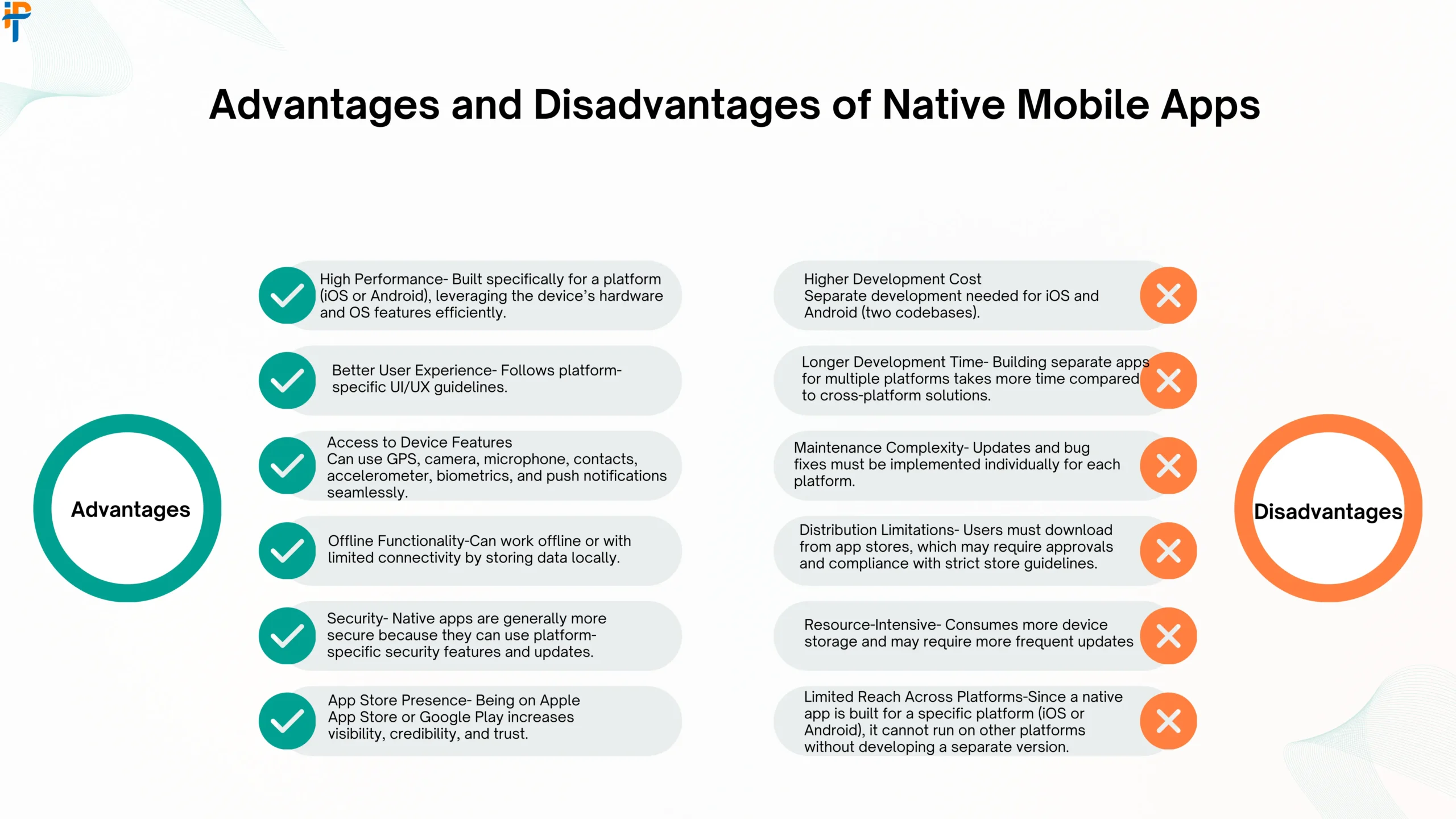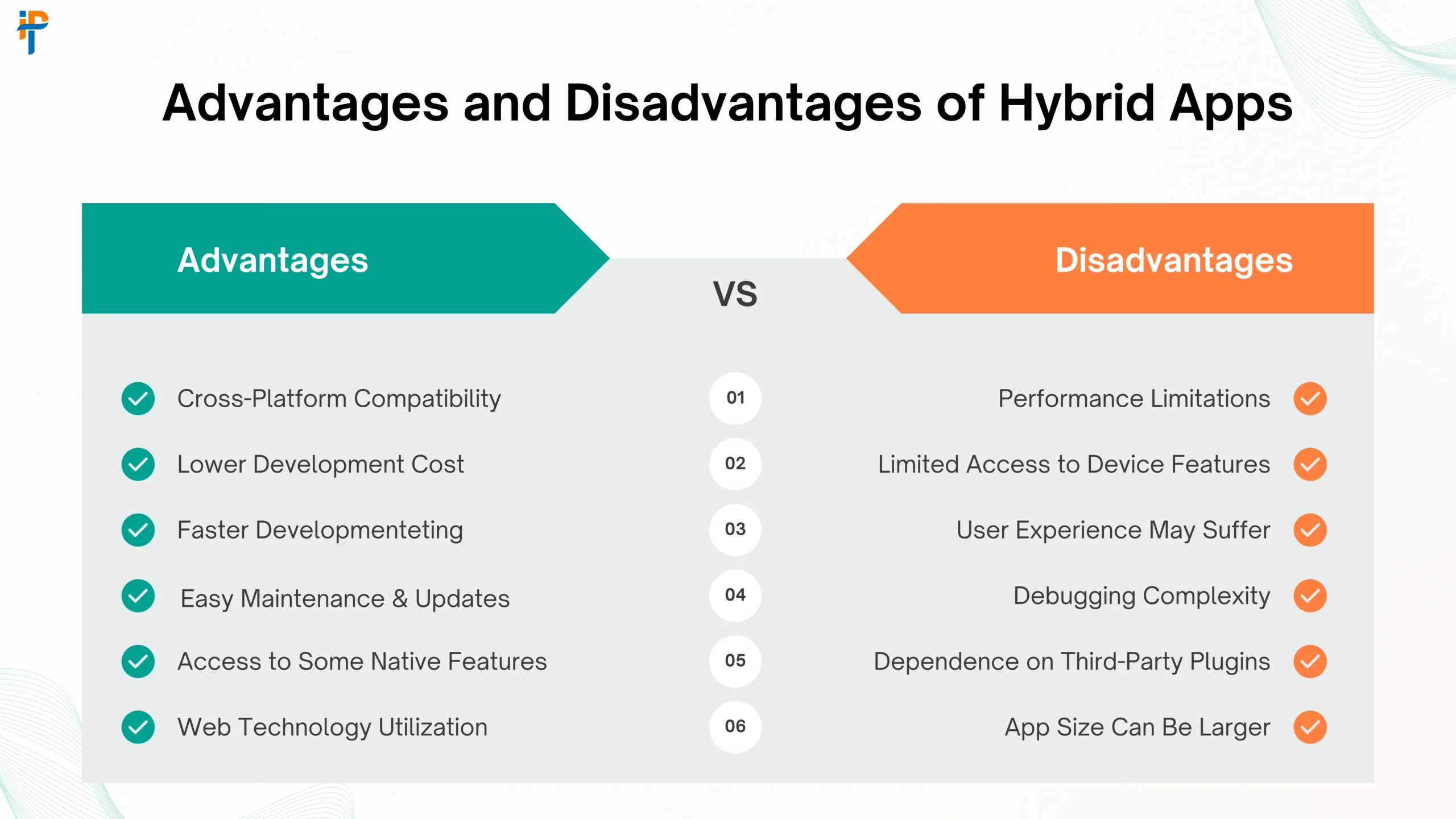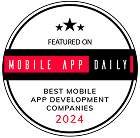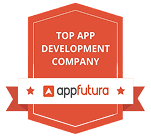Introduction: Navigating App Development Choices in a Mobile-First World
Have you ever wondered why some apps feel lightning-fast while others make you want to throw your phone across the room? The secret often lies in the fundamental technology choice made during development. In 2025, we’re living in a world where 303.50 billion app downloads are expected, and choosing the right app development approach isn’t just important—it’s mission-critical for your business success.
The Evolving App Landscape: Why 2025 Demands Smarter Decisions
Let’s be real, the app development world has changed dramatically. Remember when having any mobile app was considered innovative? Those days are long gone. Today’s users expect seamless experiences, blazing-fast performance, and features that work whether they’re on a subway with spotty Wi-Fi or lounging at home with fiber-optic internet.
According to recent market data, businesses are now paying an average of $171,450 for custom applications, with the mobile app industry projected to reach $567.19 billion by 2030. These aren’t just numbers—they represent a fundamental shift in how we think about digital experiences.
Aligning App Strategy with Business Objectives
Here’s the million-dollar question: What do you actually need? Are you a startup trying to validate an idea quickly? An enterprise looking to enhance customer engagement? Or somewhere in between? Your answer will dramatically influence which path you should take.
Think of it like choosing a vehicle. You wouldn’t buy a sports car for hauling construction materials, right? Similarly, you shouldn’t choose native development when a PWA could serve your needs at a fraction of the cost—or vice versa.
A Quick Overview of Web, Native Mobile, and Hybrid Apps
Before we dive deep, let’s get our definitions straight:
Web Apps: Applications that run in your browser, accessible from any device with an internet connection
Native Mobile Apps: Platform-specific apps built exclusively for iOS or Android
Hybrid Apps: A clever middle ground using frameworks like React Native or Flutter to deploy across multiple platforms from a single codebase
Each has its strengths, weaknesses, and ideal use cases. The key is understanding which aligns with your business goals.
Also Read- How Much Does React Native App Development Cost in 2025 | Budget & ROI Insight
Understanding the Fundamentals: Defining Your Options
What Are Web Applications?
Core Characteristics and How They Work
Web applications are like that reliable friend who shows up wherever you need them. They’re accessed through browsers, require no installation, and work across all devices. Simple, right?
But here’s where it gets interesting. Modern web apps aren’t just static websites dressed up with fancy buttons. They’re sophisticated applications that can handle everything from document editing (think Google Docs) to complex financial transactions.
According to development cost analysis, web app development costs often range from $10,000 to $100,000, making them typically the most budget-friendly option for businesses getting started.
Evolution to Progressive Web Apps (PWAs) in 2025
Now, let’s talk about PWAs—the game-changers of 2025. Progressive Web Apps are essentially web applications on steroids. They offer offline functionality, push notifications, and install-like experiences without requiring app store approval.
The numbers are staggering: The global PWA market was valued at USD 3.53 billion in 2024 and is projected to grow from USD 5.23 billion in 2025 to reach USD 21.44 billion by 2033, with a CAGR of 18.98%.
Why the explosive growth? PWAs showed comparable engagement metrics but demonstrated a higher retention rate compared to native apps, with a 70% increase in session length and a 20% increase in page views per session.
What Are Native Mobile Apps?
Platform-Specific Development: iOS and Android
Native apps are the thoroughbreds of the mobile world. Built specifically for iOS (using Swift or Objective-C) or Android (using Kotlin or Java), they offer unmatched performance and seamless integration with device features.
But here’s the catch: developing for iOS is, on average, 15-20% higher than for Android, yet Apple’s market share stands at a commanding 76.9%. This means you’re often looking at developing for both platforms to capture your full audience.
The Role of Native Tech Stacks in High-Performance Experiences
When you need to access advanced hardware features—think AR experiences, complex animations, or intensive data processing—native development is often your best bet. These apps can tap directly into device capabilities like cameras, GPS, accelerometers, and biometric sensors without jumping through compatibility hoops.
What Are Hybrid Mobile Apps?
Bridging Web and Native: React Native and Flutter
Hybrid apps are the diplomatic peacekeepers of app development. They allow you to write code once and deploy everywhere—or at least, that’s the dream. Using frameworks like React Native or Flutter, developers can create apps that run on both iOS and Android from a single codebase.
Cross-Platform Efficiency Explained
The efficiency gains are real. Instead of maintaining two separate codebases (iOS and Android), you manage one. This translates to faster development cycles, easier updates, and reduced maintenance costs. According to industry data, PWA development costs range from $15,000 to $80,000, positioning hybrid solutions between web and native in terms of investment.
Also Read- Build a Fundable MVP in 2025: The Ultimate Founder’s Guide
Pros and Cons: A Balanced Breakdown
Advantages and Disadvantages of Web Apps
Pros:
- Accessibility Champion: Work on any device with a browser—no downloads required
- Cost-Effective: Generally the least expensive option to develop and maintain
- Instant Updates: Push changes live immediately without user action
- No App Store Gatekeepers: Skip the approval process entirely
- Single Codebase: One version serves all platforms
Cons:
- Limited Device Integration: Can’t access all hardware features easily
- Offline Challenges: Traditional web apps struggle without internet (though PWAs address this)
- Performance Ceiling: May not match native app speed for intensive tasks
- Discovery Issues: Users don’t naturally browse for web apps like they do app stores
Advantages and Disadvantages of Native Mobile Apps
Pros:
- Superior Performance: Direct access to device resources means faster, smoother experiences
- Full Hardware Access: Utilize every sensor, camera, and component without limitations
- Seamless UX: Platform-specific design guidelines ensure familiarity for users
- App Store Presence: Benefit from platform discovery and credibility
- Advanced Capabilities: Perfect for AR, VR, gaming, and resource-intensive applications

Cons:
- Higher Costs: Development costs range from $40,000 for simple apps to over $400,000 for complex solutions
- Longer Timelines: Building for multiple platforms sequentially takes time
- Platform-Specific Maintenance: Updates must be implemented separately for iOS and Android
- App Store Dependencies: Subject to approval processes and platform policies
- Larger Teams Required: Need separate expertise for each platform
Advantages and Disadvantages of Hybrid Apps
Pros:
- Faster Development: Single codebase significantly reduces build time
- Cost Savings: Typically 30-40% less expensive than dual native development
- Easier Maintenance: One update serves all platforms
- Good Performance: Modern frameworks like Flutter offer near-native speed
- Broad Reach: Deploy to iOS, Android, and sometimes web from one codebase

Cons:
- Potential Performance Gaps: May lag behind native for graphics-intensive apps
- Dependency on Web Views: Some frameworks rely on web technologies that can introduce latency
- Limited Access to Newest Features: Platform-specific features may take time to support
- Framework Dependencies: You’re at the mercy of third-party tool updates
- Compromise on UX: May not perfectly match platform-specific design patterns
Also Read- App Maintenance Costs: What Developers Don’t Tell You
Head-to-Head Comparison: Web vs. Native vs. Hybrid in 2025
Performance, Security, and User Experience Analysis
Let’s talk about performance. If you’re building a simple content app or business tool, web apps (especially PWAs) can deliver excellent performance. But if you’re creating a 3D game or augmented reality experience? Native is your only real choice.
PWAs demonstrate 60% fewer security vulnerabilities compared to native apps, making them a more attractive option for developers and businesses alike. This security advantage, combined with 36% higher conversion rates and an average 180% increase in user engagement, makes PWAs particularly compelling for e-commerce and content platforms.
Cost and Time-to-Market Breakdown
Here’s where rubber meets road—the investment. Let’s break down what you’re really looking at:
| App Type | Development Cost Range | Time to Market | Maintenance (Annual) |
|---|---|---|---|
| Web App | $10,000 – $100,000 | 2-4 months | $2,000 – $15,000 |
| Progressive Web App (PWA) | $15,000 – $80,000 | 3-5 months | $3,000 – $12,000 |
| Hybrid App | $40,000 – $150,000 | 4-6 months | $8,000 – $25,000 |
| Native App (Single Platform) | $40,000 – $250,000 | 5-8 months | $10,000 – $50,000 |
| Native App (Both Platforms) | $80,000 – $400,000+ | 8-14 months | $20,000 – $80,000 |
Scalability and Maintenance Considerations
Think long-term. That initial savings on a web app might look attractive, but what happens when you need to scale to millions of users?
Or when iOS 20 drops and you need compatibility updates?
Native apps typically scale better for complex applications but require more maintenance investment. PWAs offer excellent scalability with lower maintenance costs, making them increasingly popular for businesses prioritizing efficiency.
Here’s a comparison of key factors:
| Factor | Web Apps | Native Apps | Hybrid Apps |
|---|---|---|---|
| Scalability | Excellent (cloud-based) | Excellent (optimized) | Very Good |
| Update Speed | Instant | App store review process | App store review process |
| Offline Functionality | Limited (PWAs better) | Excellent | Very Good |
| Cross-Platform Cost | Low | Very High | Medium |
| Device Integration | Limited | Comprehensive | Good (improving) |
| User Discovery | SEO-dependent | App store presence | App store presence |
| Installation Friction | None (PWAs minimal) | High (download required) | High (download required) |
Real-World Applications and Success Stories
Iconic Web Apps: Google Workspace and Beyond
Google Workspace (formerly G Suite) proves that web apps can handle enterprise-level complexity. Millions of businesses rely on web-based Gmail, Docs, Sheets, and Slides daily. No installation, instant collaboration, automatic updates—it’s the web app dream realized.
Other stellar examples include Figma (collaborative design), Notion (productivity), and Canva (graphic design). These platforms chose web-first strategies and disrupted industries dominated by desktop software.
Native Mobile Powerhouses: Uber and Instagram
Uber’s native apps leverage GPS, real-time data processing, push notifications, and payment systems simultaneously—all while delivering smooth, responsive experiences. Try doing that with a basic web app!
Instagram built its empire on native development, utilizing camera integration, complex image processing, and seamless social features that simply perform better when directly accessing device capabilities.
Hybrid Success Stories: Airbnb and Walmart
Airbnb initially used React Native to accelerate development, enabling them to share significant portions of code between iOS and Android while maintaining quality user experiences.
Walmart’s mobile app handles millions of users, complex inventory systems, and integrated shopping experiences using React Native. They’ve proven that hybrid approaches can scale to enterprise demands.
IPH Technologies Case Studies
At IPH Technologies, we’ve delivered over 500 successful projects for 430+ satisfied clients, spanning all three approaches based on specific business needs.
E-Commerce PWA for Retail Client: We developed a Progressive Web App that increased mobile conversions by 45% while reducing development costs by 60% compared to native alternatives. The offline-capable shopping experience drove customer satisfaction scores through the roof.
Native Healthcare App for Hospital Network: For a major healthcare provider, we built HIPAA-compliant native apps for iOS and Android, integrating with medical devices and providing secure, real-time patient monitoring capabilities that hybrid solutions couldn’t reliably deliver.
Hybrid Logistics Platform: A transportation company needed rapid deployment across platforms. Our React Native solution cut time-to-market by 5 months compared to dual native development, while delivering the performance needed for real-time tracking and communication.
Also Read- Top 15 Benefits of IT Staff Augmentation for Startups & Enterprises in 2025
When to Choose What: Strategic Decision Framework
Business Goal Alignment
Let’s get practical. Here’s when each approach makes the most sense:
Choose Web Apps / PWAs When:
- You need maximum accessibility across all devices
- Budget constraints are significant
- Time-to-market is critical
- Your app is content-heavy or tool-focused
- You want to bypass app store politics
- SEO discoverability matters
- Your target audience includes desktop users
Choose Native Apps When:
- Performance is non-negotiable (gaming, AR/VR)
- You need comprehensive hardware access
- Building for a specific platform’s ecosystem
- User experience must be absolutely premium
- Your app requires intensive graphics or processing
- Brand presence in app stores is valuable
- You have budget for platform-specific development
Choose Hybrid Apps When:
- You need both iOS and Android coverage
- Budget is moderate but not unlimited
- Performance requirements are moderate
- Time-to-market matters but quality can’t suffer
- Your team has web development expertise
- Maintenance efficiency is a priority
- Your app functionality falls in the “middle complexity” range
2025 Trends: AI, 5G, and AR/VR
AI is already reducing development costs, with automation of testing, code generation, and improved algorithms saving up to 30% of the budget. This democratizes app development, making sophisticated features accessible to smaller businesses.
5G networks are eliminating the performance gap between web and native apps for many use cases. With ultra-fast, low-latency connections, PWAs can deliver experiences that previously required native development.
AR and VR still favor native development for complex implementations, but hybrid frameworks are rapidly catching up. Flutter, for example, now supports AR experiences that were previously exclusive to native code.
Scenario-Based Guide for Different Business Sizes
Startups (Limited Budget, Need Speed):
- Best Choice: PWA or Hybrid
- Why: Validate your concept quickly without betting the farm on expensive native development
- Strategy: Start with PWA, migrate to hybrid or native if traction demands it
Small to Medium Businesses (Growth Mode):
- Best Choice: Hybrid or Native (platform-specific)
- Why: Balance cost with quality; reach your target market effectively
- Strategy: If your audience is primarily on one platform (say, iOS for premium products), go native. If you need broad reach, choose hybrid.
Enterprises (Resources Available, Quality Critical):
- Best Choice: Native or Hybrid (depends on complexity)
- Why: You can afford the investment; focus on delivering exceptional experiences
- Strategy: High-performance needs? Go native. Need corporate tools across platforms? Hybrid works great. Want both? Many enterprises maintain web, PWA, AND native apps for different use cases.
Also Read- AI App Development Cost in 2025: From MVPs to Full-Scale Solutions
Key Takeaways: Empowering Your 2025 App Strategy
As we wrap up this comprehensive guide, let’s distill the essential insights:
1. Web Apps and PWAs for Broad Reach and Agility The PWA market is experiencing explosive growth, with projections showing a rise from USD 5.23 billion in 2025 to USD 21.44 billion by 2033. This isn’t hype—it’s businesses voting with their budgets for accessible, cost-effective solutions.
2. Native Apps for Immersive, High-Stakes Experiences When your app IS your business (think Uber, Spotify, or mobile games), native development’s premium investment delivers premium returns. Don’t compromise on what matters most.
3. Hybrid Apps for Balanced Efficiency and Innovation Modern frameworks like Flutter and React Native have matured significantly. They’re no longer “good enough” alternatives—they’re legitimate first-choice options for many projects.
4. The Multi-Approach Future Here’s something interesting: many successful companies don’t choose just one approach. They maintain PWAs for discovery and broad access, complemented by native apps for power users. This “best of both worlds” strategy is becoming standard among digital leaders.
Conclusion: Partner with IPH Technologies to Build What’s Next
Choosing between web, mobile, and hybrid apps isn’t about finding the “best” option—it’s about finding the right fit for YOUR business objectives, budget, and timeline.
At IPH Technologies, we’ve spent years mastering all three approaches. With over 500 successful projects and 430+ satisfied clients, we don’t push a one-size-fits-all solution. Instead, we listen to your goals, analyze your constraints, and recommend the path that genuinely serves your needs.
Whether you’re a startup validating an MVP or an enterprise scaling your digital presence, we bring:
- Deep technical expertise across web, native, and hybrid development
- Agile methodologies that keep projects on track and adaptable
- Proven track record delivering solutions that exceed expectations
- Comprehensive services from strategy through post-launch support
The app landscape in 2025 offers incredible opportunities—but only if you make informed decisions backed by expertise and experience.
Ready to turn your vision into reality? Let’s craft your custom app solution today. Whether it’s a lightning-fast PWA, a feature-rich native experience, or an efficient hybrid approach, IPH Technologies has the skills and dedication to bring your project to life.













.png)


